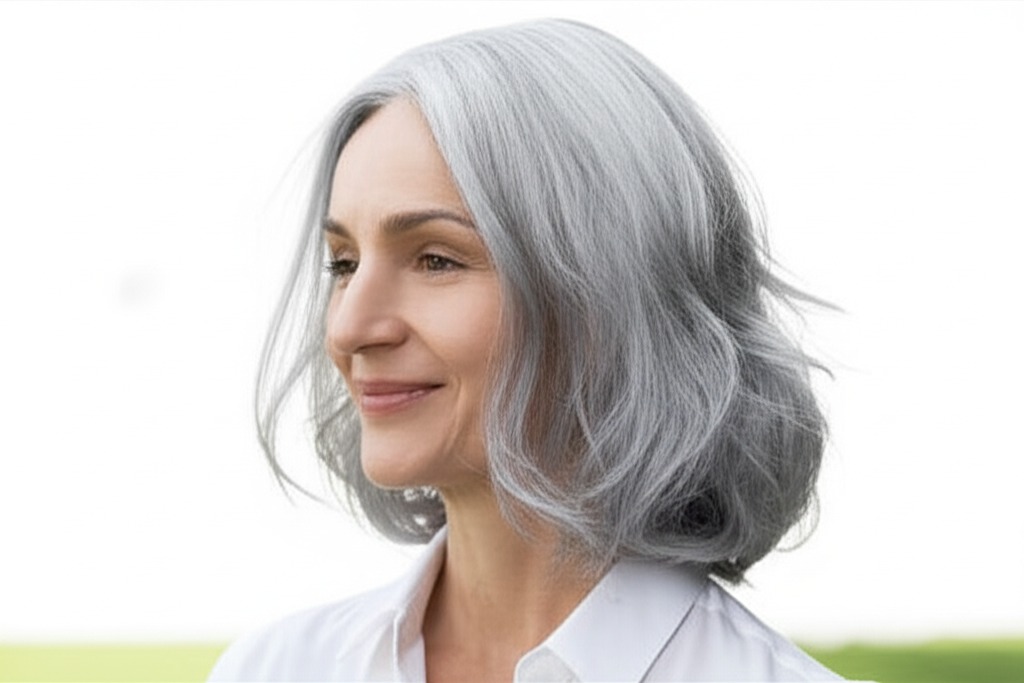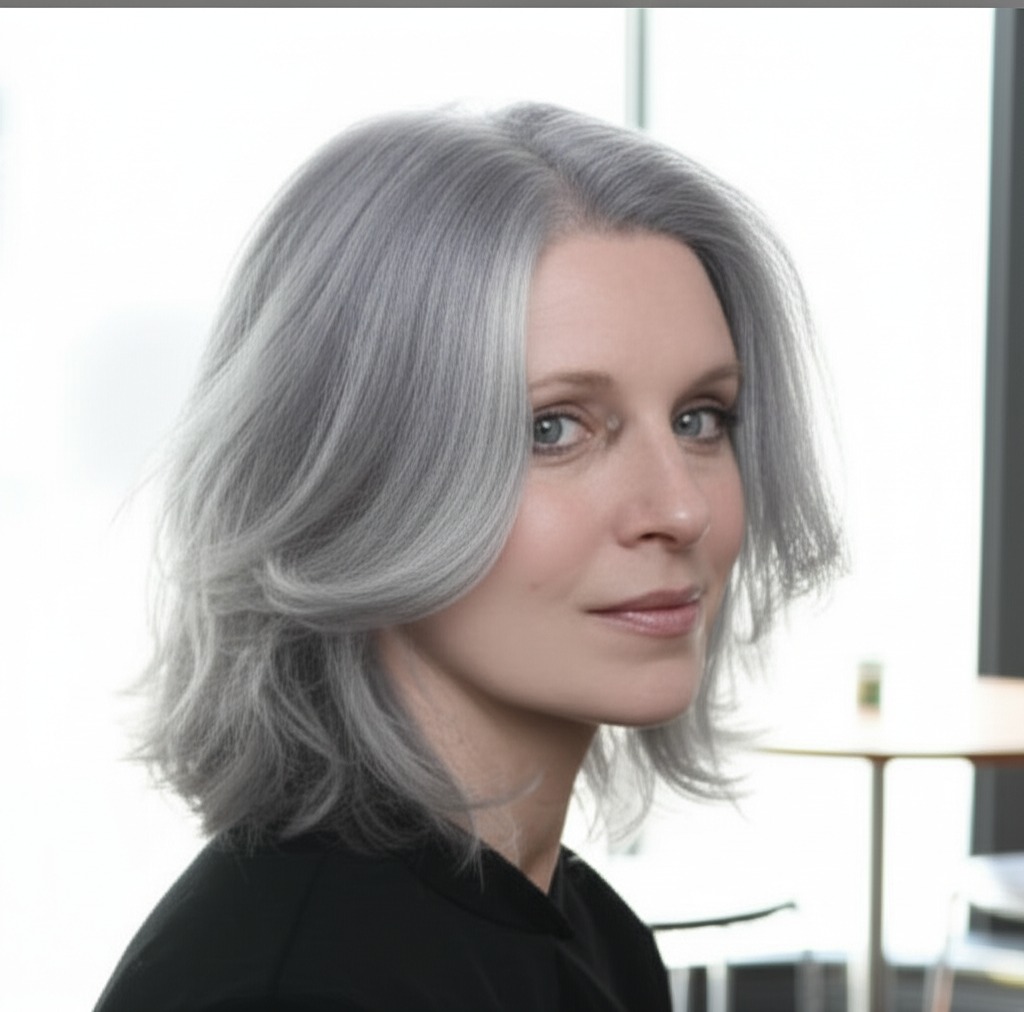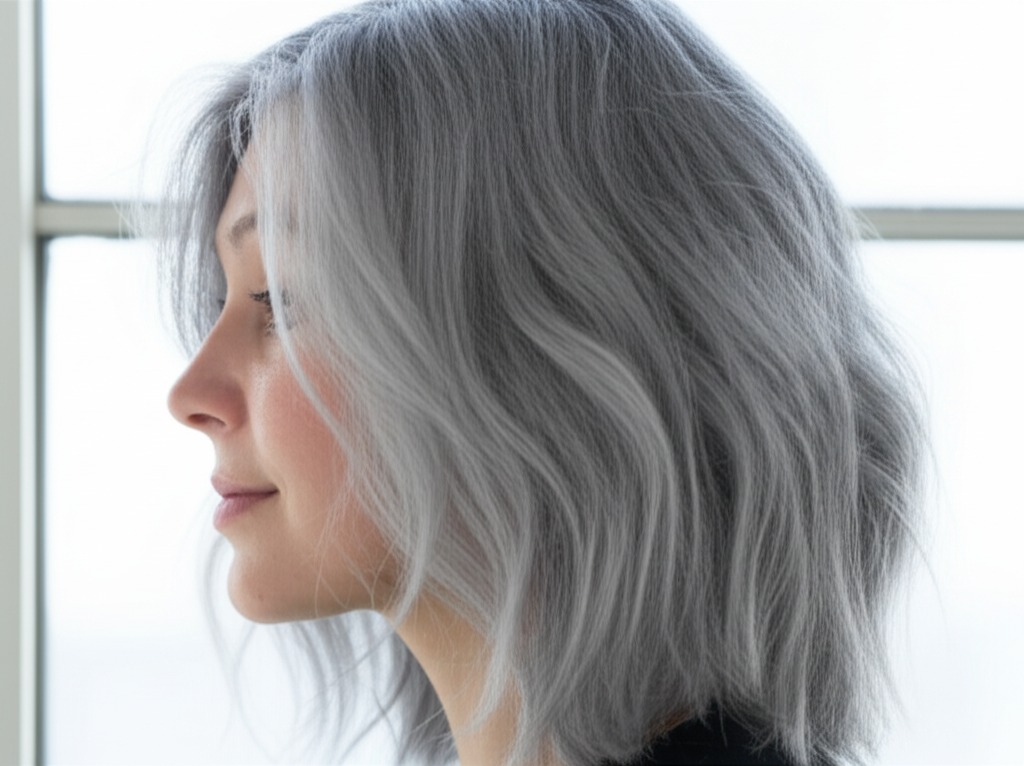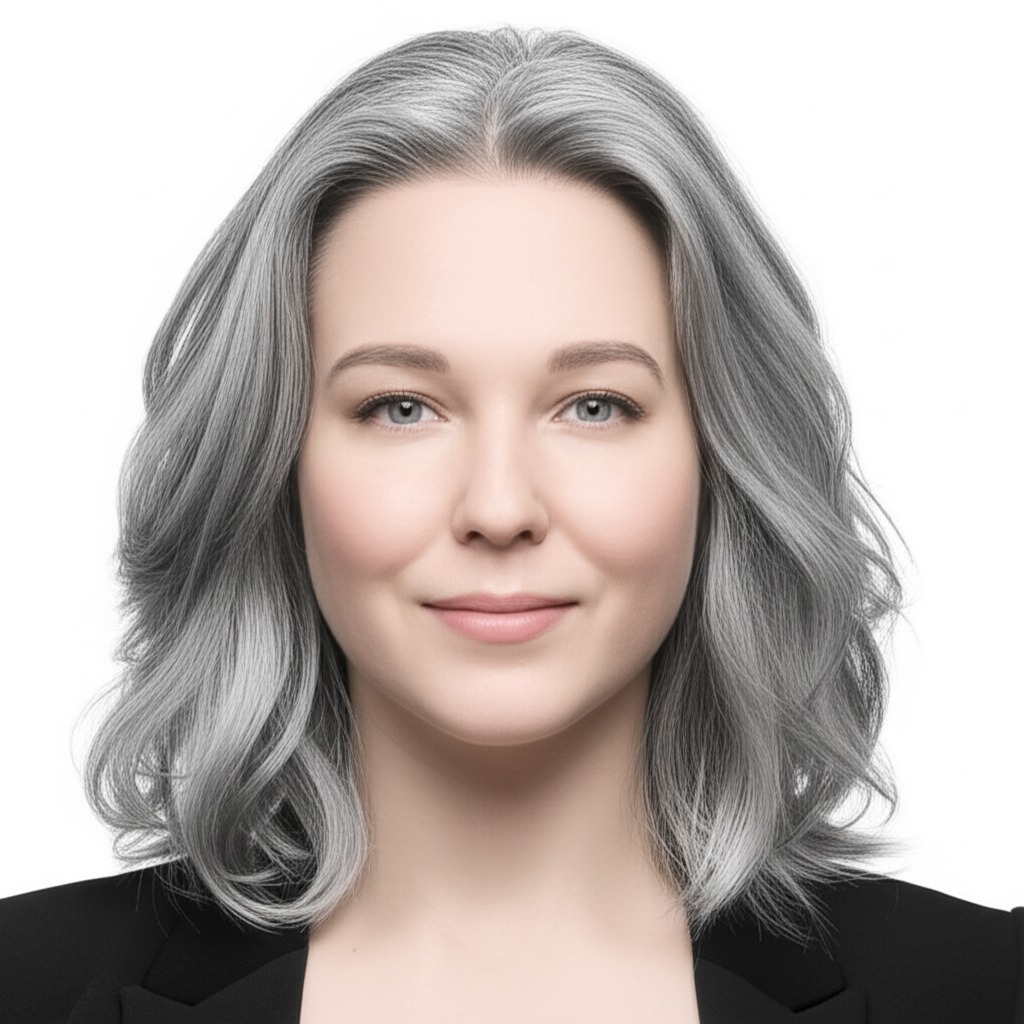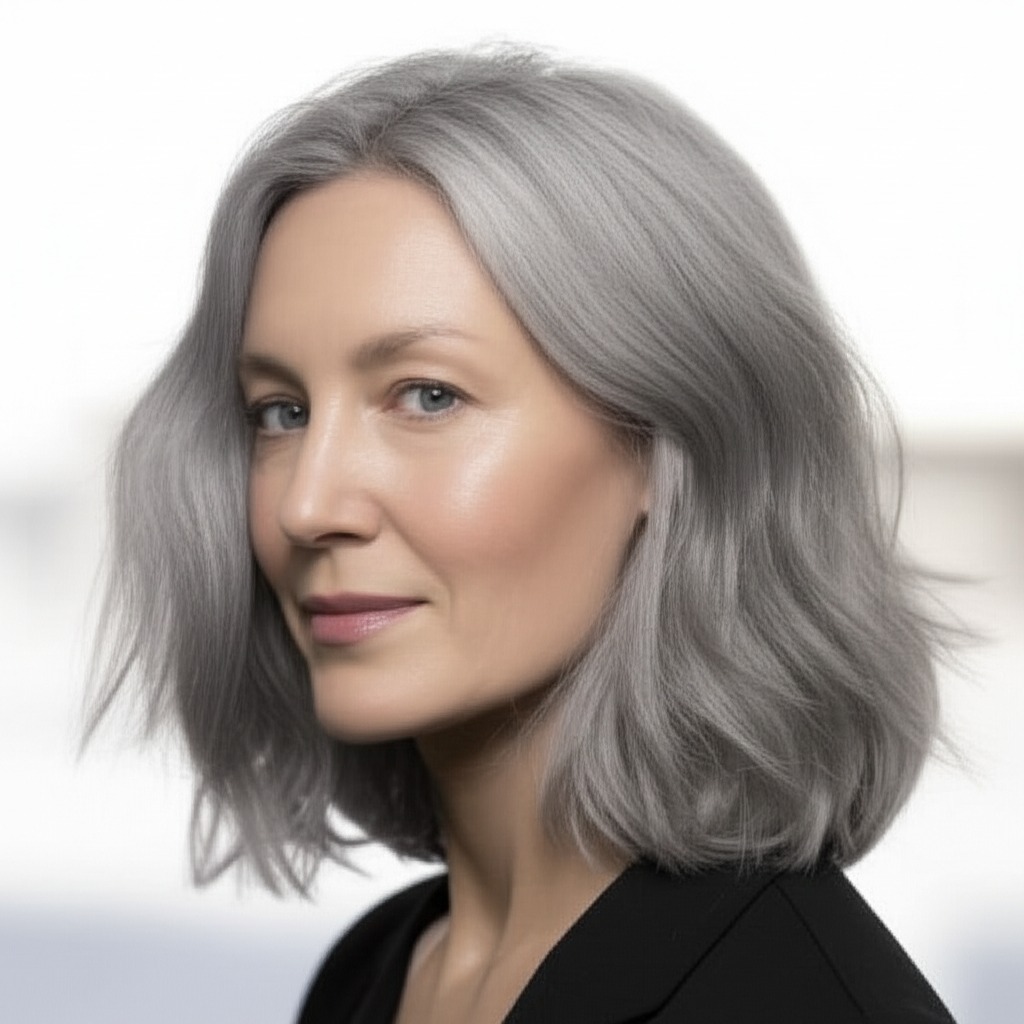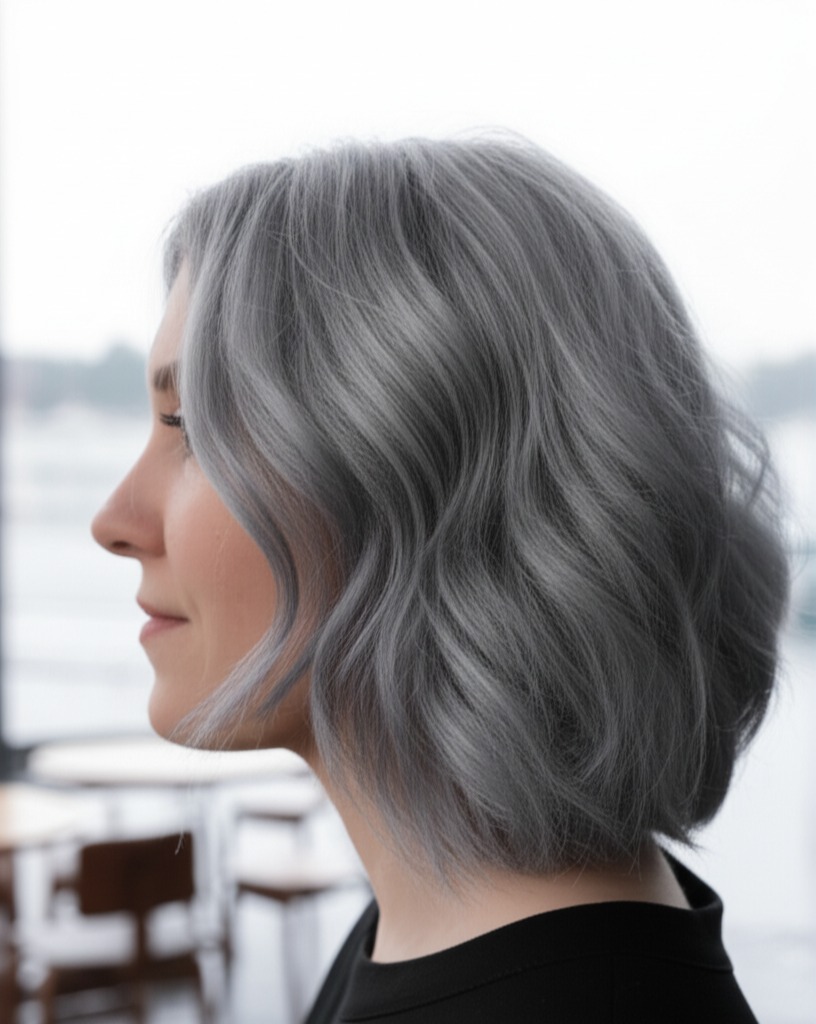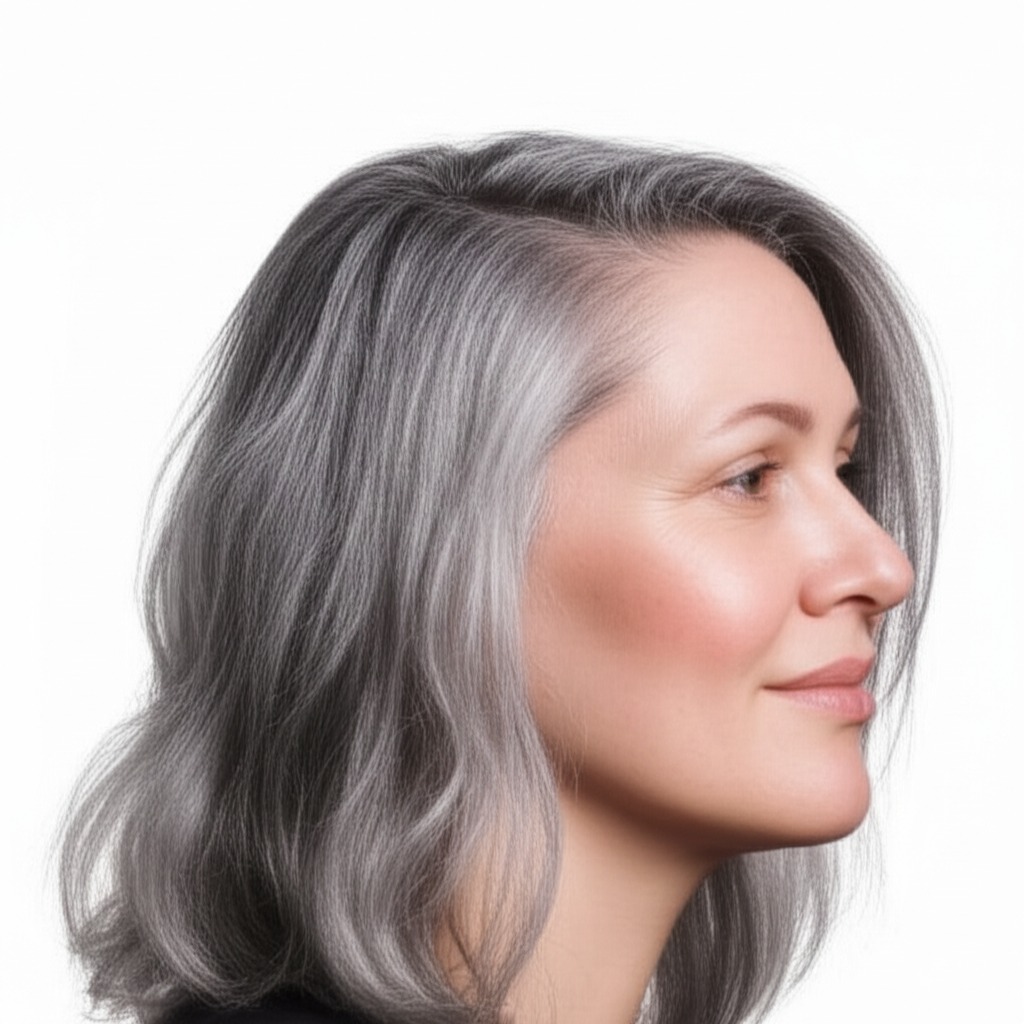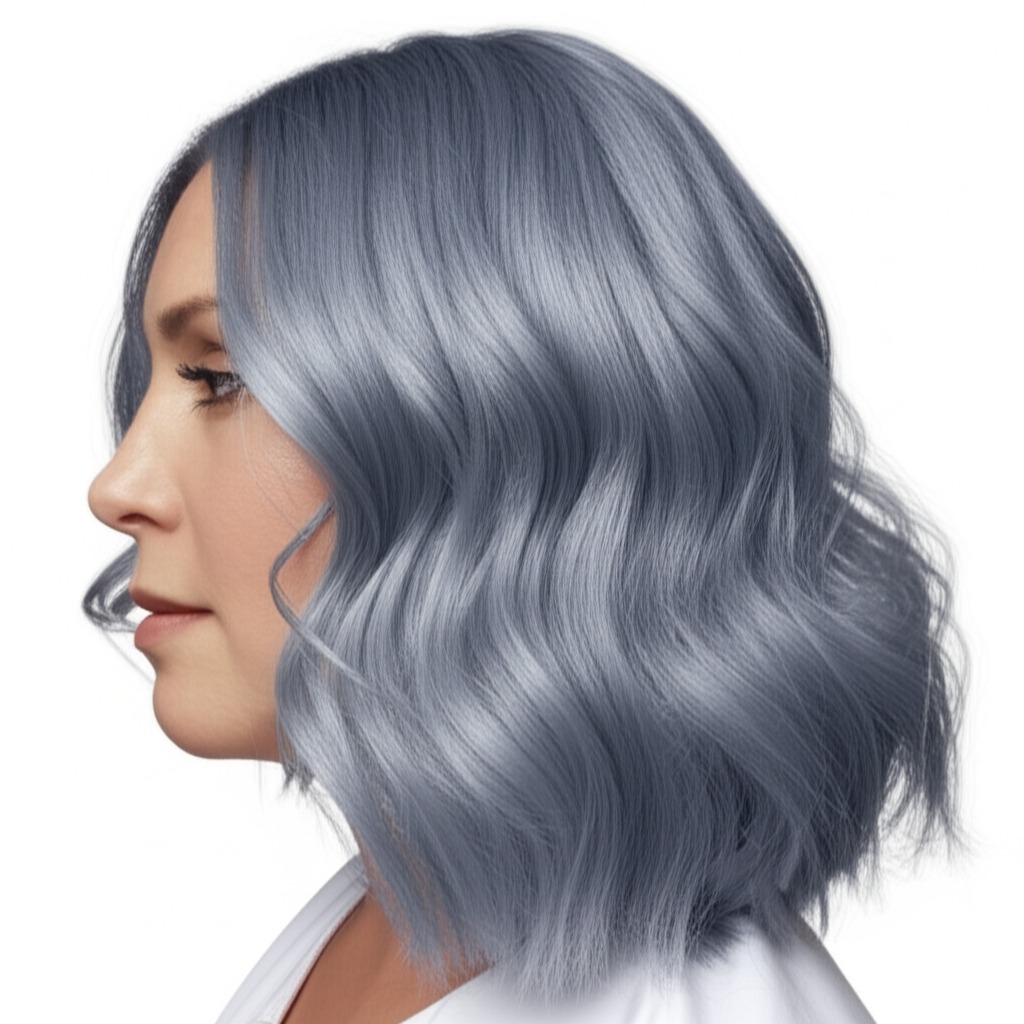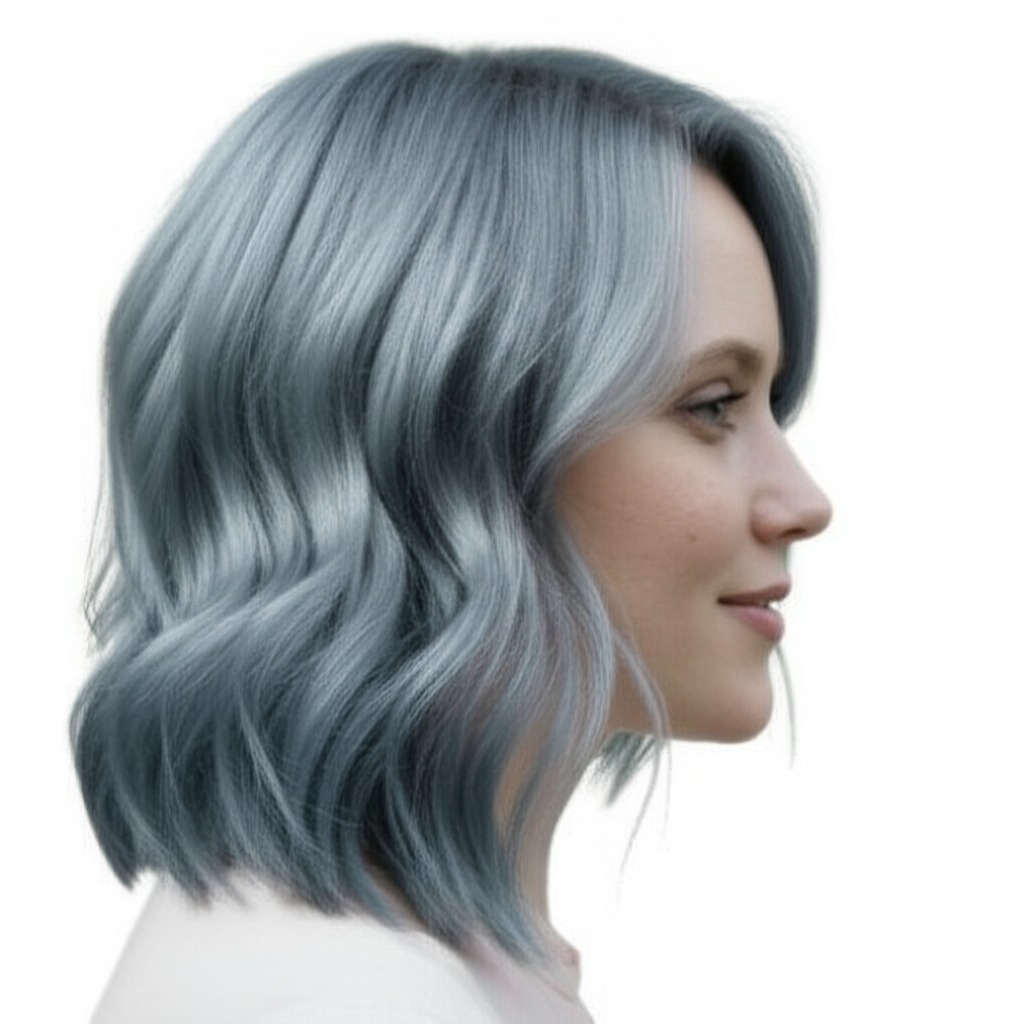#Embracing the Silver Lining: A Guide to Gray Hair Color
Gray hair—it’s more than just a milestone; it's a statement! Whether you're naturally graying, transitioning gracefully, or intentionally choosing silver strands, embracing your grays can be beautiful and empowering. This guide breaks down everything you need to know about achieving and maintaining gorgeous gray hair color, regardless of your starting point or lifestyle.
#1. Understanding Gray Shades: Depth & Undertone
Gray isn't just one shade! It’s a spectrum influenced by your natural hair color and the pigments added (or not added) during coloring processes. Let’s break it down:
- Undertones: Just like skin, gray hair has undertones that impact how it looks against you.
- Cool Grays: These have blue or violet undertones. They appear silvery, icy, and often quite striking.
- Neutral Grays: A balance of cool and warm tones. This is the most common type of natural gray and tends to be softer than cooler grays.
- Warm Grays: These have golden or beige undertones. They can look more creamy or sandy, offering a warmer, gentler appearance.
- Depth (Levels): Hair color levels range from 1 (jet black) to 10 (lightest blonde). Gray hair doesn't have a level itself; it’s the remaining pigment that determines its perceived depth. Someone with dark brown roots and gray strands will have deeper grays than someone with light blonde roots and gray strands.
#2. Who Does Gray Flatter?
The beauty of gray is its versatility, but understanding your features helps maximize the impact:
- Skin Tone & Undertone:
- Cool Skin Tones (pink or blue undertones): Cool grays often look stunning, enhancing a natural coolness.
- Warm Skin Tones (yellow or golden undertones): Warmer grays can complement and soften warm skin tones.
- Neutral Skin Tones: You're lucky! You can likely pull off most gray shades beautifully.
- Eye Color: Gray hair complements many eye colors:
- Blue Eyes: Cool grays create a striking contrast, making eyes appear even brighter.
- Green Eyes: Warmer grays enhance the richness and depth of green eyes.
- Brown Eyes: Almost any gray shade can work; consider your skin's undertone for best results.
- Natural Starting Level: This is crucial.
- Dark Hair (Levels 1-4): Transitioning requires more effort and potentially multiple sessions to achieve even, natural-looking gray. High contrast with roots can be very stylish!
- Medium Hair (Levels 5-7): A relatively smoother transition is possible, often requiring less correction.
- Light Hair (Levels 8-10): Graying tends to appear more naturally and requires minimal intervention.
#3. Technique Options: Finding Your Perfect Approach
How you achieve your gray look matters just as much as the shade itself!
- Single Process: A uniform color application, best for those already mostly gray or wanting a solid, all-over silver look.
- Highlights/Lowlights: Add dimension and soften the transition from darker roots to lighter grays. Lowlights can deepen existing gray strands; highlights add brightness.
- Babylights: Ultra-fine highlights that create subtle shimmer and blend seamlessly with natural gray growth. Perfect for a soft, gradual transition.
- Gloss/Toner: Essential! Toners refine the shade (cool it down, warm it up), enhance shine, and neutralize unwanted tones like brassiness.
- Balayage-Effect vs Solid: Balayage creates a softer, more natural look with blended roots – excellent for gradual gray transitions or adding dimension to solid grays.
#4. Maintenance & Longevity: Planning Ahead
Gray hair maintenance isn’t just about color; it's about preserving the integrity of your strands.
- Wash Frequency: Less is more! Washing too often can fade color and dry out hair. Aim for 2-3 times a week, or less if possible.
- Toner Refresh: Toners typically last 4-8 weeks. Schedule regular appointments to maintain the desired shade and combat brassiness.
- Root Growth Pacing: If transitioning from dark hair, consider embracing the contrast! A gradual approach can be more forgiving on your hair's health. Discuss with your stylist how frequently you want root touchups or a full refresh.
- Budget/Time Planning: Gray transitions can require significant upfront investment (multiple salon visits). Maintaining gray color is generally less expensive than covering it, but regular toning appointments are essential. Expect to spend anywhere from $100-$350+ per visit depending on the complexity and location.
#5. Seasonality & Pairing with Cuts: Styling for Every Occasion
- Seasonal Tweaks:
- Spring/Summer: Lighter, brighter grays look fresh and vibrant. Consider a gloss to enhance shine.
- Fall/Winter: Deeper, more muted grays create a cozy, sophisticated vibe.
- Cut Pairings:
- Bob & Lob: Gray looks incredibly chic with these classic cuts – especially when paired with balayage or face-framing highlights.
- Long Layers: Adds movement and dimension to gray hair, softening the overall look.
- Pixie Cut: A bold choice that showcases a striking silver mane!
- Event/Occasion Picks:
- Work: A more subtle, blended gray or a solid cool gray conveys professionalism.
- Daytime: Embrace your natural texture and add shine with a gloss.
- Evening: Go bolder with a brighter, cooler gray for an elegant look.
- Weddings: Consider adding highlights to brighten the overall appearance and reflect light beautifully in photos.
#6. At-Home Care: Protecting Your Investment
Proper care is vital for keeping your gray hair healthy and vibrant.
- Sulfate-Free Shampoo & Conditioner: Sulfates strip color, leading to faster fading.
- Clarifying Cadence: Product buildup can dull gray hair. Use a clarifying shampoo occasionally (every 4-6 weeks) – but don't overdo it!
- Heat Protection: Heat styling damages hair and fades color. Always use a heat protectant spray before blow-drying, straightening, or curling.
- Color-Safe Styling Products: Look for products specifically formulated for color-treated hair.
- Product Checklist: Sulfate-free shampoo & conditioner, leave-in conditioner, heat protectant, silver brightening mask (optional), styling mousse/serum.
#7. Common Pitfalls: Troubleshooting Gray Hair Challenges
- Brassiness: Warm tones peeking through! Use a purple or blue toning shampoo/conditioner to neutralize.
- Banding: Uneven color application, often seen during transitions from dark hair. Requires careful correction by a skilled stylist.
- Patchiness: Uneven gray distribution – can be minimized with babylights and strategic highlighting.
#8. Pros & Cons: Weighing the Options
Pros:
- Unique & Stylish: Gray hair is increasingly celebrated as a sign of wisdom and sophistication.
- Reduced Salon Visits (Long-Term): Once you’ve reached your desired gray level, maintenance is typically less frequent than covering grays completely.
- Versatile Styling Options: Gray hair can be styled in countless ways to suit any look.
Cons:
- Significant Time & Cost (Transitioning): Achieving a full gray transformation from dark hair can take time and money.
- Fade Risk: Gray hair tends to fade faster than pigmented hair, requiring more frequent toning.
- Texture Changes: Graying often comes with changes in hair texture – it may become drier or coarser.
#9. Salon Consultation Script: Setting Expectations
Before your appointment, prepare for a productive conversation! Ask your stylist these questions:
- “What gray shade would best complement my skin tone and undertones?”
- "How many sessions will it likely take to achieve my desired level of gray?"
- “Can you show me examples of different techniques (balayage vs. single process) on hair similar to mine?”
- “What at-home care products do you recommend for maintaining my gray color and hair health?”
- "How can we minimize the risk of brassiness or banding?"
#10. FAQs: Your Burning Questions Answered
- Can I go gray if I dye my hair? Yes, but it will likely be masked by your current color until you stop coloring. The transition will still occur underneath the artificial pigment.
- Does stress make me go gray faster? While genetics play a major role, chronic stress can potentially impact premature graying in some individuals.
- Is gray hair coarser than pigmented hair? Often yes. Gray hairs tend to have less natural oils and can feel drier or more wiry.
- Can I reverse gray hair? Unfortunately, there's no proven way to completely reverse graying naturally at this time.
- Will my gray look the same as someone else’s gray? No! Everyone’s gray is unique due to individual genetics and underlying pigment.
- How do I prevent my grays from looking dull? Regular toning, proper hydration (both internally & externally), and avoiding excessive heat styling are key.
Embracing your gray hair can be a beautiful journey of self-discovery! With the right knowledge and care, you can rock those silver strands with confidence and style.
